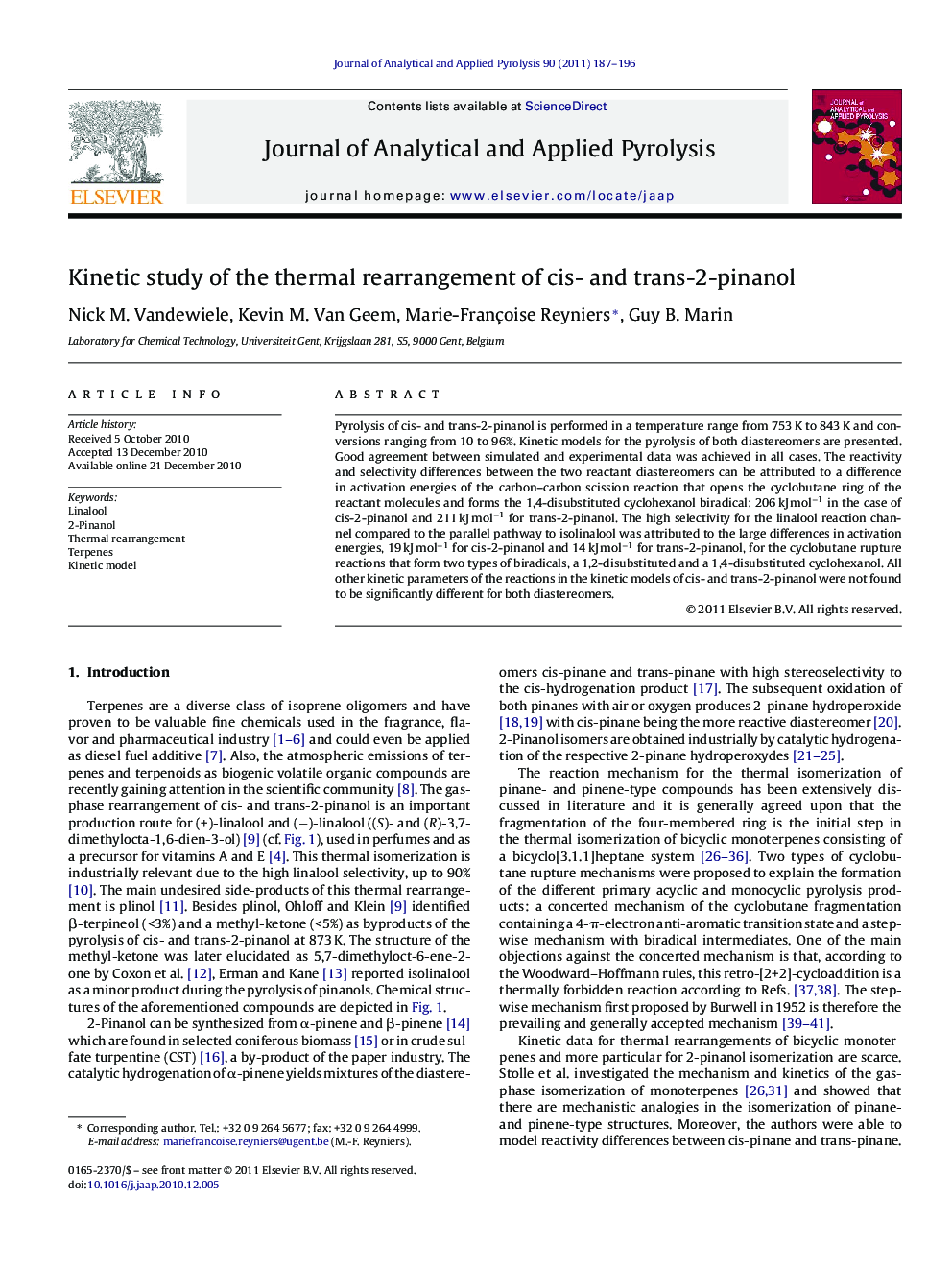| Article ID | Journal | Published Year | Pages | File Type |
|---|---|---|---|---|
| 7607204 | Journal of Analytical and Applied Pyrolysis | 2011 | 10 Pages |
Abstract
Pyrolysis of cis- and trans-2-pinanol is performed in a temperature range from 753Â K to 843Â K and conversions ranging from 10 to 96%. Kinetic models for the pyrolysis of both diastereomers are presented. Good agreement between simulated and experimental data was achieved in all cases. The reactivity and selectivity differences between the two reactant diastereomers can be attributed to a difference in activation energies of the carbon-carbon scission reaction that opens the cyclobutane ring of the reactant molecules and forms the 1,4-disubstituted cyclohexanol biradical: 206Â kJÂ molâ1 in the case of cis-2-pinanol and 211Â kJÂ molâ1 for trans-2-pinanol. The high selectivity for the linalool reaction channel compared to the parallel pathway to isolinalool was attributed to the large differences in activation energies, 19Â kJÂ molâ1 for cis-2-pinanol and 14Â kJÂ molâ1 for trans-2-pinanol, for the cyclobutane rupture reactions that form two types of biradicals, a 1,2-disubstituted and a 1,4-disubstituted cyclohexanol. All other kinetic parameters of the reactions in the kinetic models of cis- and trans-2-pinanol were not found to be significantly different for both diastereomers.
Related Topics
Physical Sciences and Engineering
Chemistry
Analytical Chemistry
Authors
Nick M. Vandewiele, Kevin M. Van Geem, Marie-Françoise Reyniers, Guy B. Marin,
